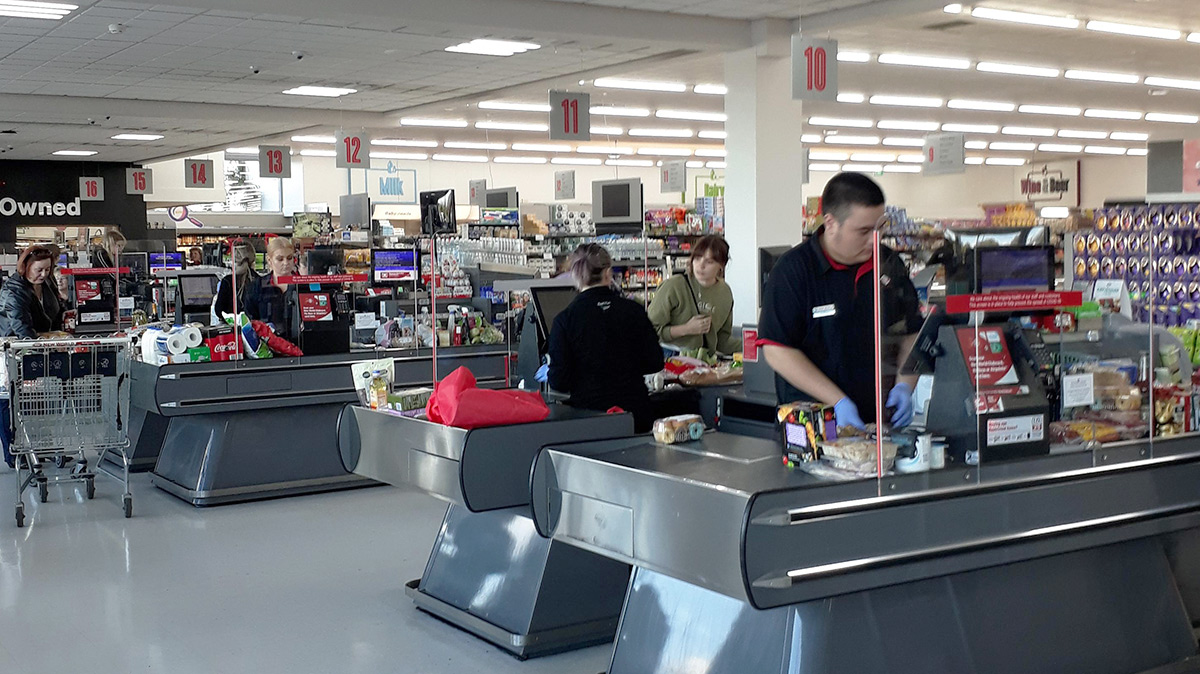OSHA is highlighting installing “sneeze guards” as the key to returning to normal business operations in the United States.
In their Guidance on Preparing Workplaces for COVID-19 the Occupational Safety and Health Administration listed “clear plastic sneeze guards” among the key Engineering Controls they believe can aid in curbing workplace transmission of the coronavirus.
“Engineering Controls” allow businesses to “reduce exposure to hazards without relying on worker behavior”. These are considered some of the most effective safety measures an organization can take. They’re especially important right now, as adequate PPE (personal protective equipment) continues to be in short supply, and altering worker/customer behavior is inherently slow and unreliable. It just takes one visitor ignoring their fever to sicken an entire office.
Engineering Controls are inherently the best place to start for businesses looking to increase worker and community safety. Of the several Engineering Controls OSHA lists, “sneeze guard” barriers are among the most cost effective. (Others include installing drive-thru windows or high-efficiency air filters, increasing building ventilation rates, or engineering positive/negative pressure ventilation differentials to draw airborne pathogens away from work areas.)
“Everywhere you go,” observes Total Security Solutions CEO Jim Richards, “you see these barriers going up. But we’re seeing in grocery stores, hardware stores, and other retail operations that their only option is slap up a piece of quarter-inch or eighth-inch plastic in place.”
That’s a good stop-gap measure—but stop-gaps likely will not cut it. Yes, there are some promising signs that coronavirus infections may slow in the summer months. But we now know that a second deadlier wave of coronavirus infections is almost certain this fall.
As such, it’s extremely important that businesses prepare now—and get it right. Improvised plywood-and-plastic “sneeze guards” are flimsy, unattractive, and get in the way of doing business.
The Problem with DIY Sneeze Guards
Total Security Solutions knows from long experience:
If a safety measure gets in the way, then workers are going to move it out of the way. That puts everyone in harm’s way.
“If you’ve never designed a barrier system for retail,” Jim explains, “it’s pretty easy to overlook basically everything: How is the cashier going to scan a gallon of milk? What about weighing bananas? What if the customer is elderly and can’t pick it up and twist an item around so the scanner can see the barcode? Can they work the credit card reader unassisted, or does the cashier need to punch some buttons? Who will bag the purchases?”
Additionally, improvised sneeze guards aren’t engineered: They aren’t durable, and don’t lend themselves to being repeatedly taken down and put back up.
“Let’s face it: This isn’t going away in a few months. Even if you can uninstall your sneeze barrier by July 4th, you’re going to be putting it right back up before Thanksgiving.”
Total Security Solutions has developed VirusGuard™ Barriers in order to be sure there is a durable, reusable, flexible pathogen barrier system on the market. These are TSS’s first non-ballistic barrier systems, available now as both custom fixed barrier systems and temporary mobile barriers.
“This was a solution that we engineered, asking ourselves, ‘Can we help our existing customers and give them some options and choices?’ When you look at financial institutions, pharmacies, municipalities, they need something that works, and want something that’s aesthetically pleasing. Not just a piece of eight-inch polycarbonate slapped up in front of your face. This isn’t ballistic, but it’s still protecting people. That’s what we’ve always focused on: Keeping people safe while staying out of their way.”
Learn More About Our VirusGuard™ Products
Developing VirusGuard Pathogen Barriers
“Initially,” Jim adds, “This was just something that we came out with to help our existing customer base.” It began with requests from retail banking customers who needed something less than a ballistic barrier, but more than plastic sheets and staples. “This is more substantial, more aesthetically pleasing.”
Over just a few weeks, TSS worked through multiple generations, focusing on driving out cost while increasing ease of use. The mobile barrier system was especially challenging in this respect. It needed to be exceptionally compact, cost-effective, suited to a wide range of applications, freestanding and sturdy, easy to assemble without tools, and easy to breakdown and store before redeploying it for the next flu season—or whatever other health crises might come.
“We donated some early systems—both fixed and mobile—to St. Joseph Mercy Hospital’s pharmacy, as well as to local dentists’ offices. We also made sure that anyone who worked for us, if they had loved ones in healthcare, those people had a mobile unit. This didn’t just give us valuable insights into how these systems could be improved. It also gave us peace-of-mind, knowing that there was a higher level of protection out there for people continuing to do this essential work for all of us sheltering at home.”


